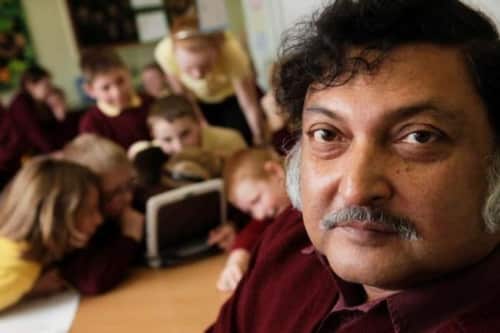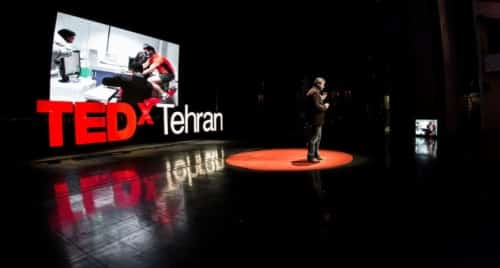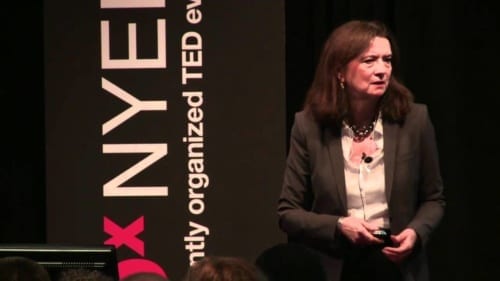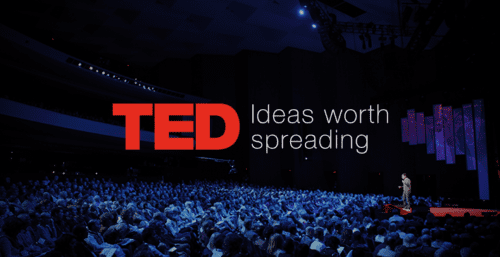What began in 1984 as a mild-mannered conference about technology, entertainment and design has emerged as a juggernaut of a media company that in some ways dominates the education space like nothing in history. Its parent entity, the Sapling foundation, had an adjusted net income of $42.7 million in 2015 – a not too shabby return on a very simple idea: build a clearinghouse of free knowledge from the world’s most inspired thinkers, and do it in 18 minutes or less.
The TED Executive

Professor Sugata Mitra
Mitra is Professor of Educational Technology at the School of Education, Communication and Language Sciences at Newcastle University, England. He is a leading advocate of Minimally invasive education. Mitra is credited with numerous inventions in the areas of cognitive science and education technology, and was the 2013 winner of the $1 million TED Prize (TED invests $1 million every year in individuals who have powerful ideas, a program designed to accelerate progress towards some of the world’s most pressing problems).

TED has evolved to include local events all over the globe. These local events are called TEDx, and at last count, there were some 3600 events happening per year. According to Anderson, TEDx was an idea they floated with little expectation for widespread success. “TEDx was an experiment that has blown us away. It started because so many people came to us and said: Please do a conference in my town in India! In my town in Brazil! There was no way we could produce that many conferences on our own, but we knew amazing ideas were out there that needed to be captured and shared.
We decided to give our model away for free, and let passionate volunteers replicate the TED experience worldwide, all in service to our non-profit mission of Ideas Worth Sharing. Honestly, we thought there’d be a handful of TEDx events a year – but there are now roughly ten held every day in the world, from prisons to the Sydney Opera House. There are more than 80 thousand TEDx talks on YouTube. TEDx has been instrumental in fulfilling our mission and in unearthing new ideas. Some of the most-watched talks on TED.com came from TEDx events.”
Little TED
 Rob Ivy lives in Nashville. He is the chief financial officer of Lee Company, a mechanical contracting, facilities and home services company with over 900 employees serving government, institutional, commercial, healthcare and industrial organizations as well as residential customers throughout middle Tennessee, southern Kentucky, and northern Alabama. Ivy is a board member and speaker coach for TEDx Nashville, a successful TEDx organization. Ivy and others refer to the home organization as Big TED, and the TEDx organizations as Little TED. Ivy is a big believer in the value of TED, and talks passionately about the platform. “I believe that part of the appeal of TED Talks is the “purity” of the platform. No politics, religion, or advertising. No fees or honorariums. Just original ideas presented by passionate advocates. I think of it as “open source knowledge.” Viewers appreciate that TED Talks are a safe space, where the only agenda is enhancing society through imparting knowledge, sharing ideas, and sparking creativity.
Rob Ivy lives in Nashville. He is the chief financial officer of Lee Company, a mechanical contracting, facilities and home services company with over 900 employees serving government, institutional, commercial, healthcare and industrial organizations as well as residential customers throughout middle Tennessee, southern Kentucky, and northern Alabama. Ivy is a board member and speaker coach for TEDx Nashville, a successful TEDx organization. Ivy and others refer to the home organization as Big TED, and the TEDx organizations as Little TED. Ivy is a big believer in the value of TED, and talks passionately about the platform. “I believe that part of the appeal of TED Talks is the “purity” of the platform. No politics, religion, or advertising. No fees or honorariums. Just original ideas presented by passionate advocates. I think of it as “open source knowledge.” Viewers appreciate that TED Talks are a safe space, where the only agenda is enhancing society through imparting knowledge, sharing ideas, and sparking creativity.
Another reason for the success of TED Talks is their brevity. Complex concepts in bite size portions. After all, how many two-hour seminars would draw 1,000,000 views online? Making complex concepts accessible to a broad audience in 18 minutes or less isn’t easy, but thousands of TED and TEDx speakers do it every year – providing a vast library of content that can be had for only a few minutes’ investment. The educators and innovators we’ve worked with at TEDx Nashville are drawn to the TED platform in part because it offers them the opportunity to take their life’s work beyond academia to a much broader audience.”
TEDx Nashville continues to break ground, offering talks from experts like Dr. Turner Nashe, technology expert and prison education reformer, whose company GTL is a leader in prison technology. Nashe and GTL are using technology in innovative ways to educate inmates, reducing recidivism and saving taxpayers millions. Nashe is a big fan of the TEDx experience, saying “My TEDx Talk sparked a lot of conversations. TED is not just an event or an online platform, it is a way to get innovative ideas into the public consciousness. It’s a place that lends credence to new ideas, a launching pad for public good.”
TED And The Education Expert
[caption id=”attachment_29055″ align=”alignleft” width=”361  Heidi Hayes Jacobs at TEDx NYED in 2011
Heidi Hayes Jacobs at TEDx NYED in 2011
Heidi Hayes Jacobs is President of Curriculum Designers, Inc., and Co-founder and Executive Director of the Curriculum Mapping Institute. She has taught in the Department of Curriculum and Teaching, at Teachers College, Columbia University, New York since 1981 and is a co-founder of The Hollingworth Center at Teachers College.
Jacobs has consulted with organizations like the College Board, Children’s Television Workshop, ASCD, the Discovery Channel and multiple state education departments. Interviews and features on Jacobs have appeared in the New York Times, Educational Leadership, Child Magazine, and National Public Radio. Jacobs is a well-known author whose latest book, with Marie Alcock, Bold Moves for Schools: How We Create Remarkable Learning Environments explores some of the very tenets of the TED Talk experience.
Jacobs did a TEDx NYED talk in 2011, which in many ways propelled her already uber-successful career to new heights. “Curiously, the coaching guide for TEDx Talk speakers was pivotal,” said Jacobs. “The guidelines suggested that during a session you can get one point across that just might stick. I took that advice to heart. Back in 2011 when I did my TEDx Talk I was espousing upgrading curriculum with contemporary knowledge and modern assessments employing digital media formats. I raised (and continue to raise) fundamental questions: What do we cut? What do we keep? What do we create? We can’t keep adding the new without ejecting the antiquated.”
“At the end of my talk, I decided to make my sticking point and lifted a #2 pencil to the camera, referenced the dated and reductive nature of event-based timed testing, and then broke the pencil in half. What followed was amazing to me. Anywhere I would travel to speak at conferences, teachers and administrators would walk up to me, smile, and break a pencil. To this day, I continue to receive questions and feedback about my talk. My intention was to prompt educators to seize control of curriculum and to create responsive and modern learning experiences. The TEDx Talk experience propels messages. That coaching guide helped me to laser-focus on clear, provocative and actionable points of practice.”
TED has helped pioneer the micro-learning style of professional development in the education industry. Jacobs credits her TEDx Talk in helping galvanize her style and the style of the teaching profession at large. “Micro-learning is a launching pad model. The finest TED talks break through boundaries that need breaking as a social group experience. The need for incisive and clear messaging brings out the best in speakers, too. When used as an instigator for lively interaction that leads to meaningful action or to sketching possibilities, TED is stellar. There are limits to what a short presentation can do and I think most educators acknowledge that, but there are also real possibilities when a group elects to concentrate on a single message for consideration and debate.
 It is striking how often teachers consider a TEDx Talk as part of their resource bank of media sources to use in the design of curriculum units and activity design. Many formative assessments are constructed where students respond actively to a TEDx Talk presentation. Given the wealth of subject areas, secondary teachers can draw from rich and wonderful ideas that are shared through the TEDx Talk archives. Administrators, in turn, use the talks to stimulate interaction at professional development day presentations. On more than one occasion, I have worked in schools and districts who have hosted TEDx Talks for students in their communities. I see a TEDx Talk as a specific presentation genre to be studied as assiduously as the old-style oral report… actually to replace the old-style report.”
It is striking how often teachers consider a TEDx Talk as part of their resource bank of media sources to use in the design of curriculum units and activity design. Many formative assessments are constructed where students respond actively to a TEDx Talk presentation. Given the wealth of subject areas, secondary teachers can draw from rich and wonderful ideas that are shared through the TEDx Talk archives. Administrators, in turn, use the talks to stimulate interaction at professional development day presentations. On more than one occasion, I have worked in schools and districts who have hosted TEDx Talks for students in their communities. I see a TEDx Talk as a specific presentation genre to be studied as assiduously as the old-style oral report… actually to replace the old-style report.”
Big TED, Little TED, TED viewers and participants make up one of the largest learning communities on the planet. They believe, passionately, in the power of ideas to change the world. This belief continues to strike a chord with today’s learners, many of whom will enter the workforce as entrepreneurs with a self-imposed mandate to help solve the world’s great challenges. Fortunately for them, they will have the resources and thought-leadership they need with time to spare. After all, in tomorrow’s busy world, even the most successful among them will have 18 minutes to invest in TED’s collection of knowledge from the world’s most inspired thinkers.